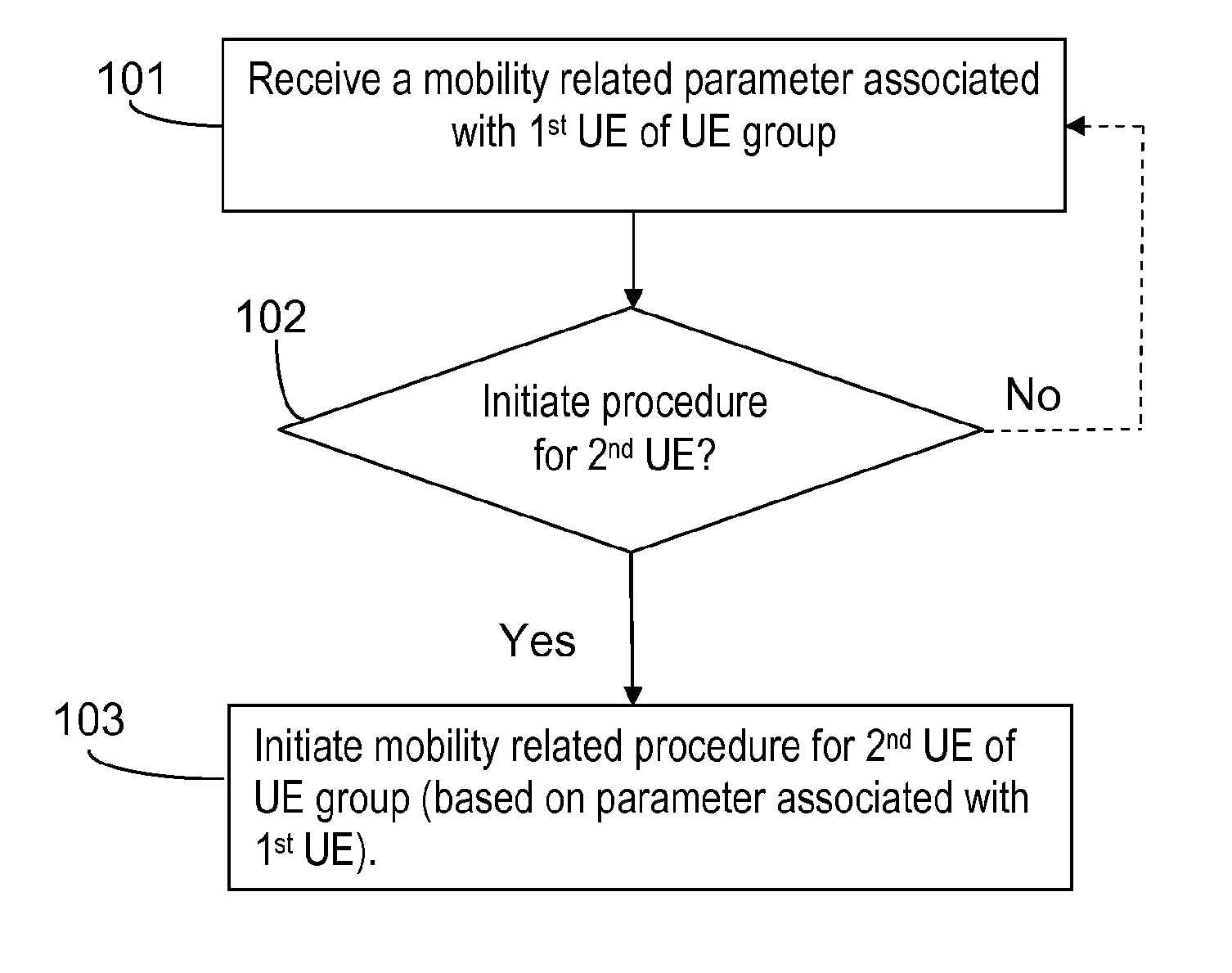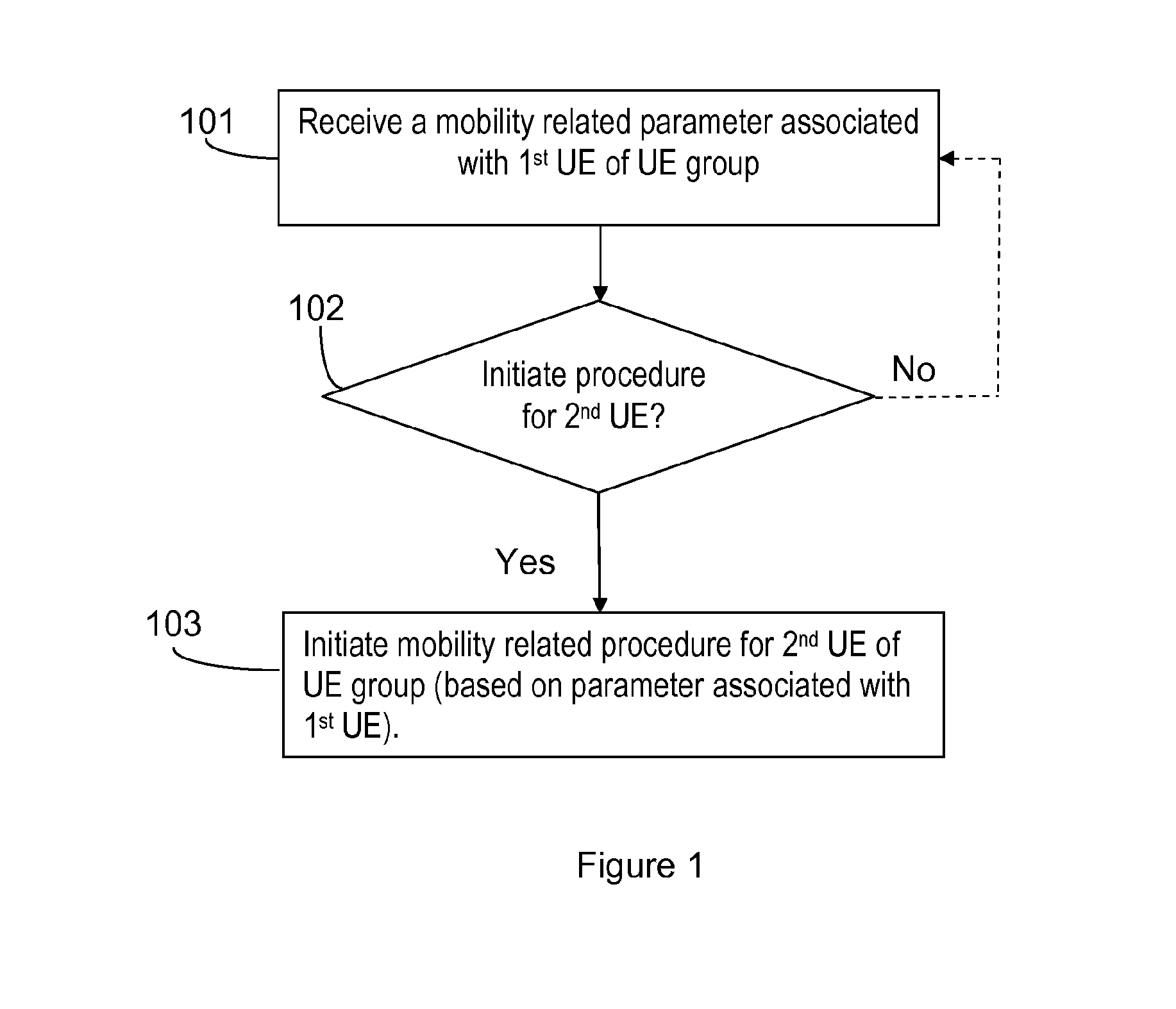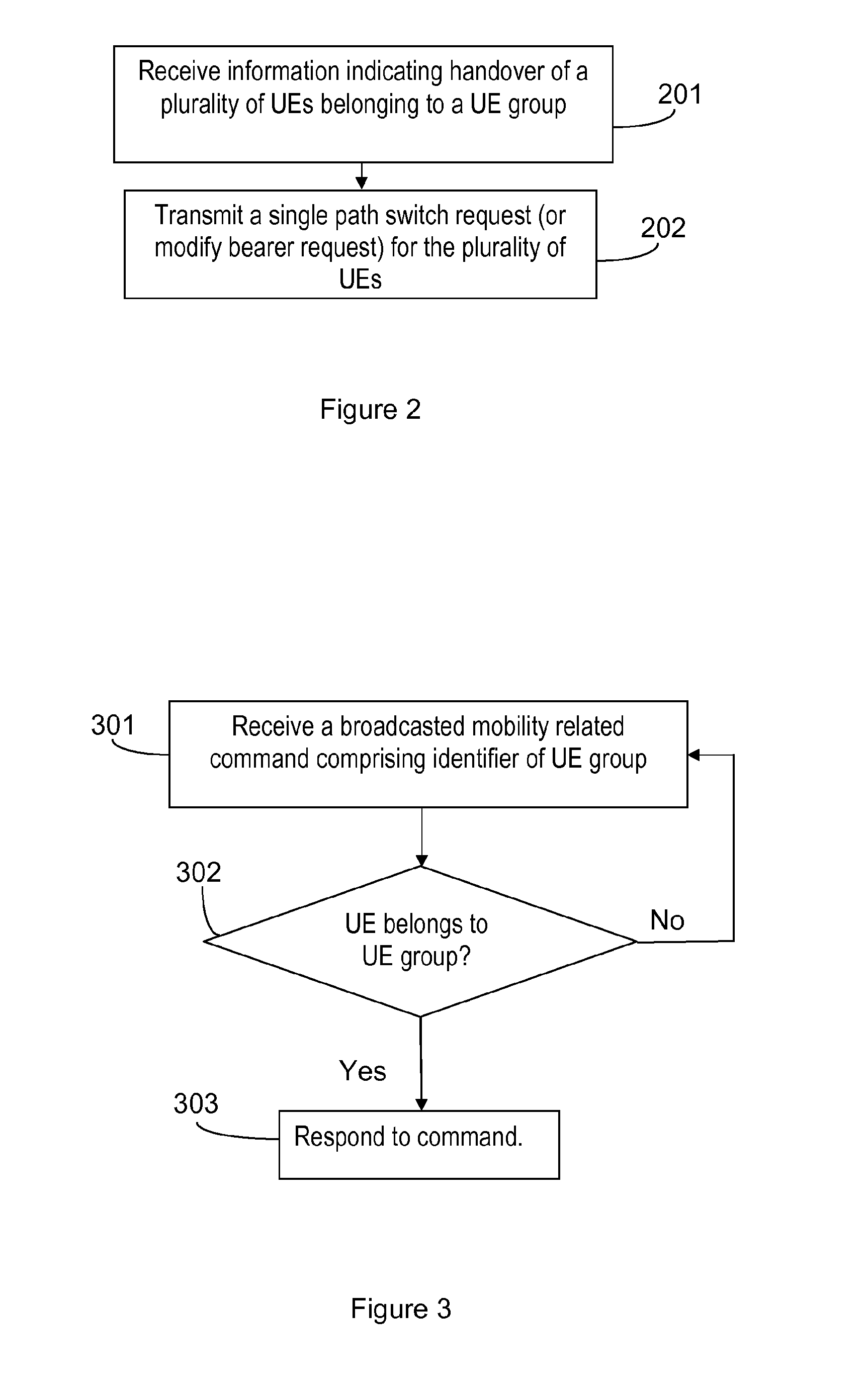Method and Arrangement for Mobility Procedures
a technology for managing user equipment and procedures, applied in the field of mobility procedures, can solve the problems of timing misalignment accuracy and the accuracy of estimated rtt, and achieve the effect of improving handover performance and more robust mobility procedures
- Summary
- Abstract
- Description
- Claims
- Application Information
AI Technical Summary
Benefits of technology
Problems solved by technology
Method used
Image
Examples
first embodiment
[0125]A different strategy with respect to the first embodiment described above may be used. In one embodiment the eNB waits for several UEs in the same group to report strong neighbors before initiating the preparation for handover. The eNB then performs handover preparation for all UEs in the group toward a subset of the reported neighbors selected based on different criteria such as the ones listed below. The eNB can choose as candidate targets for handover of the group of UEs:
1. The cell(s) reported by most UEs in the group;
2. The strongest cell(s) reported by all the UEs in the group;
3. A combination of the above two.
[0126]An exemplary flowchart of the embodiment is shown in FIG. 9. It shall be pointed out that currently standardized mobility procedures do not allow for parallel handover preparation for the same UE(s) and towards different cells at the same eNB. However, to overcome this problem, multiple handover preparations can be achieved by including the secondary candidat...
second embodiment
[0148]The advantage of the second embodiment described above is that the handover command does not necessarily have to be sent to each individual UE in the group, which can greatly reduce the overall handover signaling overhead. Also, one of the major causes of radio link failures is bad radio conditions experienced by a UE when a handover command is sent to the UE causing the loss of the handover command. Sending a handover command to all users in a broadcast fashion and / or by both the source and the target cell can ensure a timely and reliable reception of the command.
[0149]The advantage of the third embodiment described above is that it offers the flexibility of optimizing accuracy in target selection over gained time by making decision based on the first few UE measurements, or optimizing gained time over accuracy in target selection (deciding on fewer UE measurements, or even a single one). The third embodiment can therefore be applied to several use cases. For example, if UEs ...
fourth embodiment
[0150]The advantage of the fourth embodiment is that single PATH SWITCH REQUEST / PATH SWITCH REQUEST ACK / HANDOVER NOTIFY / MODIFY BEARER REQUEST / MODIFY BEARER RESPONSE messages are used for the whole group rather than one message for each UE, thereby saving a considerable amount of signaling to and from the core network. Such advantage is more significant for large groups of UEs, as it may be in the case of a high speed train carrying many UEs.
[0151]Embodiments described herein also relate to a base station operable in a wireless communication system. The base station is adapted to perform at least one embodiment of the method described above. The base station is associated with the same technical features, objects and advantages as the method described above and illustrated e.g. in FIG. 1. The base station will be described in brief in order to avoid unnecessary repetition.
[0152]Below, an exemplifying base station 1000, adapted to enable the performance of an above described method fo...
PUM
 Login to View More
Login to View More Abstract
Description
Claims
Application Information
 Login to View More
Login to View More - R&D
- Intellectual Property
- Life Sciences
- Materials
- Tech Scout
- Unparalleled Data Quality
- Higher Quality Content
- 60% Fewer Hallucinations
Browse by: Latest US Patents, China's latest patents, Technical Efficacy Thesaurus, Application Domain, Technology Topic, Popular Technical Reports.
© 2025 PatSnap. All rights reserved.Legal|Privacy policy|Modern Slavery Act Transparency Statement|Sitemap|About US| Contact US: help@patsnap.com



